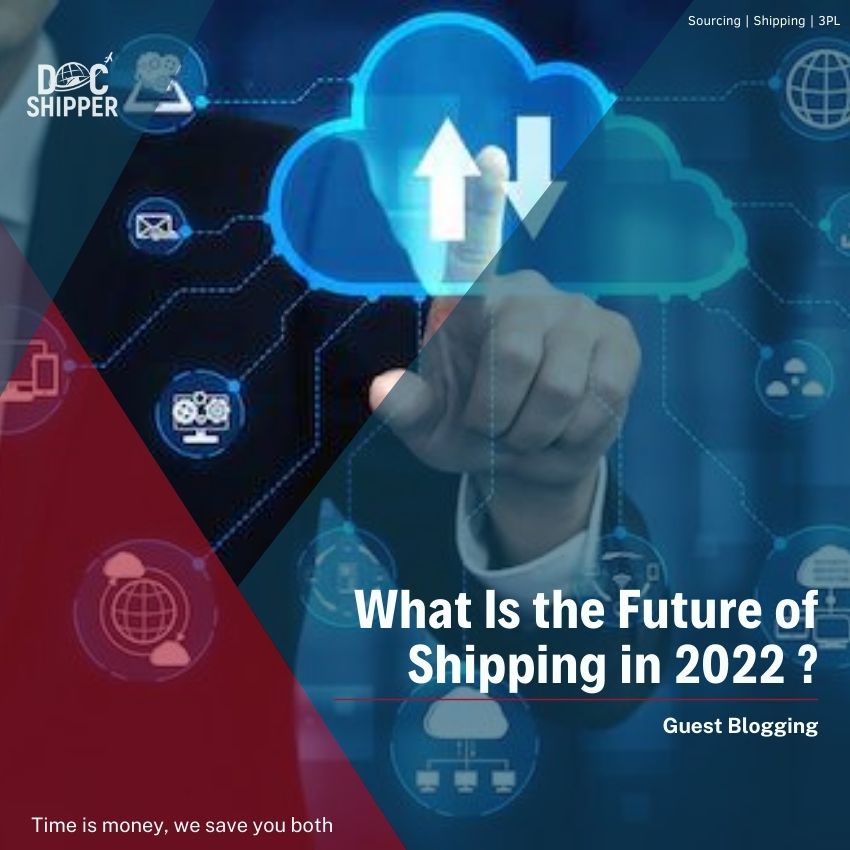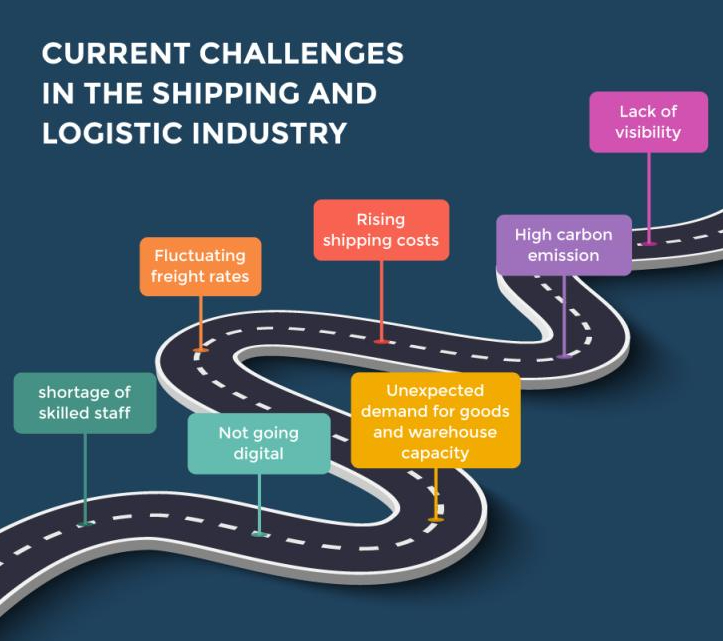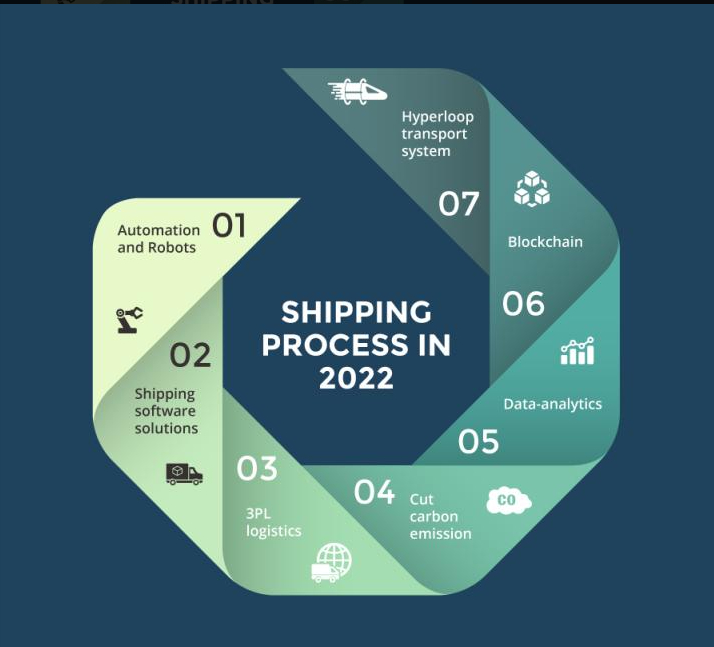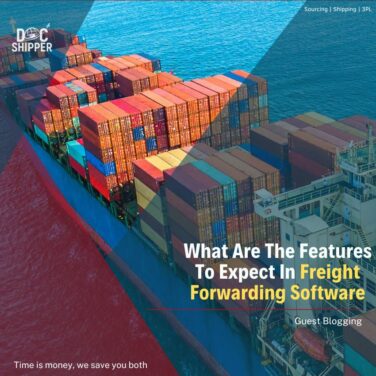A seamless shipping process facilitates industries to meet the customers’ demands across the world, and it has been an important part in defining the global economy. Warehousing, distribution, transportation, last-mile delivery, etc., are the core components of a seamless shipping process. All these components work in symphony to deliver products to the customers or buyers on time. But, a few years back, they were fragmented, and shipping was a long and exhaustive job. There was no transparency, and businesses were conducted with huge financial risks.
This has dramatically changed with the innovation in technology and shipping management strategies. Due to this, organizations are now in a better position to source, manufacture, transport, and track goods more efficiently. It has fast-paced the shipping process and increased customer satisfaction. Amidst these, came in COVID-19 breakout, and this disrupted the entire shipping process. It has put pressure on industry experts to make everything more sustainable, resilient, and effective.
Experts believe that there are few processes that still operate in the same old-fashioned, and by optimizing them with the cutting edge technologies such as cloud technology, AI, IoT, blockchain, and data analytics, they can make the shipping process linear. It can help them to overcome the issues of the modern supply chain, such as rapid product delivery, labor shortage, shipping backlog, etc. Switching to advanced and no-hassle shipments is a sure way to reduce the risks associated with the shipping process.
It is exciting to discover what the future holds for the shipping and logistics industry and how it addresses some current challenges of the shipping process.
What Are the Current Challenges In the Shipping and Logistic Industry?
Shortage of skilled staff
Offloading the goods quickly into the port minimizes the storage time in the warehouse. It means there is no congestion in the shipping process, and products can be delivered on time. But in recent times, the shortage of staff in the shipping and logistics industry have witnessed the slowing down of the offloading process and put more strain on the employees to do their job faster.
Not going digital
The shipping and logistics industry has a complex structure and involves many segments. Although stakeholders and managers have a strong urge to digitalize the entire shipping process, there are still blockages on their path. Low internet bandwidth, lack of infrastructure, hesitation towards new technologies, etc., are a few reasons that prevent them from going truly digital.
Unexpected demand for goods
Dealing with the unexpected flow of goods due to seasonal festivals or events with a limited warehouse capacity is a painstaking task for the shipping and logistics industry. It gets even more challenging if the warehouse doesn’t have skilled manpower and a transportation facility.
Warehouse Capacity
Insufficient warehouse space has been a major problem for the shipping and logistic industry as businesses are gradually resuming back to the pre-covid stage. Unable to sort goods quickly due to labor shortage and high volume of incoming goods have blocked the warehouse space. If the lack of warehouse space continues, it could further impact the supply chain.
Fluctuating freight rates
Freight rates are the price at which the cargo is transported from one point to another. The mode of transport could be truck, train, ship, and aircraft. The rise in crude oil prices has a direct impact on freight rates. Besides that, geographic location, transport vehicle capacity, and seasonal trades can influence freight rates.
Rising shipping costs
During Covid-19, the ports were shut down temporarily, and when they opened, there was a flood of shipments. The imbalance in demand and supply caused the rise in shipping costs, and it has almost doubled. On top of that, the shortage of shipping containers is also responsible for the increase in the costs.
High carbon emission
From large cargo ships to in-road transportation during the entire shipping process, they rely on fossil fuels, which lead to high carbon emissions. As per an MIT report, freight transportation makes up to 8% of global greenhouse gas emissions and as much as 11% if warehouses and ports are included.
Lack of visibility
Lack of visibility in the shipping process often causes conflict between the buyers and sellers.
DocShipper Info
You can follow all developments in maritime transport as well as innovation projects on our sites.
What Are the Technologies and Strategies That Would Make the Shipping Process Seamless and Fast – Currently and in the Future?
Automation and Robots
Automation can have a significant role in shaping the logistics and supply chain. As per McKinsey, transportation, and warehouse possesses the third-highest automation potential of any sector. One of its many applications includes using robots to offload the goods automatically. It can increase the speed of offloading and save labor costs. Increasing offloading speed through robots could be one of the ways to deal with dock congestion and controlling shipping costs.
The shipping and logistics industry that is facing the issue of labor shortage can mitigate this problem by utilizing robots and autonomous vehicles. Large enterprises like Amazon use robots such as Pegasus, Bert, Scooter, and Kermit to navigate goods in their fulfillment center. But the most innovative piece of Amazon’s robot family is Scout, used for last-mile delivery. It doesn’t end there; they have also designed an AI-based drone, “Prime Air” for aerial delivery.
Use of shipping software solutions
End-to-end visibility in the shipping process can reduce the costs associated with warehousing and storage. It is even helpful in reducing the conflict between suppliers and buyers by having a minute-to-minute update on the shipment. Shipping software provides users complete visibility of the shipping process from a single dashboard.
It further streamlines the shipping process by availing various features such as workflow automation, customization of shipment packages, automated insurance payment, shipping rate comparison, third-party logistics integration, return management, etc.
Rise of Third-party logistics
Third-party logistics or 3PL helps to solve common issues of business enterprises of managing stocks and distributing them. Since 3PL providers have their units in multiple places, it allows customers or sellers to reduce the product delivery time. But as businesses are becoming complex, third-party logistics have become more advanced in their approach. They are now using software, sensors, and devices to track products in real time. In the future, there could be more 3PL distribution centers handling shipments and taking pressure on business owners to store or track products.
Cut carbon emission
In the coming days, the shipping and logistics industry can put more effort into reducing carbon emissions and switch to an environmentally friendly transport system. Taking the initiative towards it, global carriers Maersk and X-press feeders have ordered the world’s first container vessel that will run on renewable methanol. The other alternatives to reduce greenhouse gas emissions are running ships on ammonia, hydrogen, or battery. However, most ammonia is produced from a highly carbon-intensive process, so many experts do not consider it an environmentally friendly fuel unless it is produced using a carbon-neutral method. Whereas the battery operated cargo vessels are considered more eco-friendly, and it is likely to pick up the trend.
Data-analytics
Analyzing data at every touch-point of the shipping process can help the shipping and logistic industry get in-depth ideas about the various issues in the process or track the performance. It allows them to view the shipping process in real time and take action accordingly. For instance, if there are more demands for goods during the festive season, the managers can prepare a plan in advance to avoid a shipping backlog. They can re-route the shipments or change the delivery time. Data analytics helps the shipping industry to become more proactive than reactive.
For instance, Amazon is taking data analytics to another level. Amazon wants to ship products to the customer before they place the order using “predictive analytics.” The idea is to stock the product closer to the customers based on their previous buying history and behavior. So when a customer places the order, it can be delivered on the same day or less. There is a wide application of predictive analytics in shipping, and as the technology gets better, new possibilities will unfold in the future.
Blockchain
Blockchain technology is a ground-breaking technology to solve the current issues in the shipping process. B/L or bill of lading is an essential document in the shipping process that tells about the product type, quantity, destination, details of shipper, details of the buyer, etc. B/L acts as a receipt, contract, and title to goods. Most of the time, it is a physical document, and there is a high risk of fraud if someone alters the document details.
Also, if there is any delay in receiving the B/L, it can become difficult for a carrier or buyer to claim the shipment. Blockchain can solve these issues by enabling B/L access through a distributed ledger. It prevents unauthorized access to the document and speeds up the shipping approval process. Another area where blockchain can be critical is signing smart contracts and approving payments automatically. It can be pretty valuable in eliminating the delay in deliverables due to delays in payments. Maersk and IBM’s blockchain venture “Tradelens” is currently used by many shippers to have better visibility and transparency in the shipping process. Around 234 marine gateways have agreed to use the platform.
Hyperloop transport system
Hyperloop transport system is also envisaged as a possible alternative to traditional shipping. With a speed of 700mph, it can be helpful to transport lightweight and palletized cargo between the port and industrial zone. Besides saving time and operational costs, the most significant advantage is that it can help to reduce greenhouse gas emissions.
DocShipper Tip
There are many new efficient and environmentally friendly alternatives for transporting your goods. Contact our professionals to find the most ecological and economical transport.
What Approaches Should the Shipping Industry Adapt to Become Competent in 2022 and Beyond?
Digitalization of shipping industry
The digitalization of the shipping industry is the only way to optimize the shipping core process and meet the rapidly evolving customers’ demand. Every business unit connected with the shipping industry, such as freight forwarders, 3PL, carriers, etc., should transform its infrastructure for digitalization.
Adopt smart technologies, equipment, and gadgets
Technology is the medium through which the shipping industry can collaborate better with all the vendors efficiently and improve the speed of shipping. From software solutions to wearables and sensors, they can all help to simplify and automate the entire shipping process. Identifying the right technology is the key for the shipping industry to enhance its process.
Net-zero emission
Many governments and international regulators are coming together to make shipping decarbonization. As per the World Economic Forum, the shipping industry is aiming to achieve its target of net-zero emission by 2050. Shippers have to stay prepared for various policies and regulations that regulatory bodies will impose to reduce greenhouse gas emissions.
Continuous recruiting and upskilling staff
The shipping industry has faced a labor shortage during the pandemic, and its effect is still prominent. It is estimated that one-fifth of the world’s cargo ships have been stuck in the port due to supply chain chaos. The lack of staff to unload the goods from ships is one of the reasons for ships piling up on the docks. Moving forward, the shipping industry has to become more proactive in the recruiting process and upskill employees for advanced technologies that make them more productive.
Strategic sourcing
In the modern business world, global procurement has become the new norm as it helps businesses to reduce purchasing and manufacturing costs. However, there are potential risks associated with global sourcing, such as the limited pool of suppliers, selecting the wrong supplier, lack of flexibility, quality issues, suppliers’ capabilities, supplier bankruptcy, etc. In the future, the shipping industry or 3PL providers can play an active role in mitigating such risks. They can help clients identify and select the best suppliers for their business.
Conclusion
The business ecosystem is evolving rapidly worldwide, and enterprises are redefining their strategies to respond to the changing needs. The brands are figuring out how to meet customers’ expectations and deliver their products in the least possible time. The robust shipping process, including procurement, logistics, and distribution, has assisted business enterprises in reaching their loyal customers. However, the Covid-19 outbreak has surfaced the bottlenecks in the shipping process and left the industry baffled about its current operations.
Rising shipping costs and limited human resources are other challenges that are behaving as stumbling blocks in the shipping process. Focusing on the current challenges, the shipping industry can see technology as the best solution. The advancement in technologies such as AI, cloud computing, automation, and data analytics can prove vital for the smooth functioning of the shipping and logistics business. The shipping industry is at the edge of complete transformation, and these technologies have a big role in shaping its future.
FAQ | What Is the Future of Shipping in 2022?
Read more
Looking for more? These articles might interest you:
DocShipper info: Do you like our article today? For your business interest, you may like the following useful articles :
- Coronavirus (Covid-19) impacts on import/export business
- How does Coronavirus impact international supply chain?
- 💡How to find a good product to sell?
- How to find your reliable supplier for your business? [Fair Trade Guide]
- AliExpress | Use the Chinese panacea to sell your products online
- How a sourcing strategy can rocket your margin?
Need Help with Logistics
or Sourcing ?
First, we secure the right products from the right suppliers at the right price by managing the sourcing process from start to finish. Then, we simplify your shipping experience - from pickup to final delivery - ensuring any product, anywhere, is delivered at highly competitive prices.


Fill the Form
Prefer email? Send us your inquiry, and we’ll get back to you as soon as possible.
Contact us






